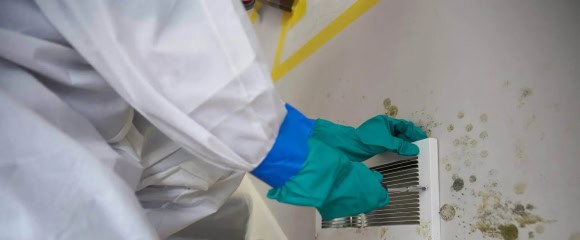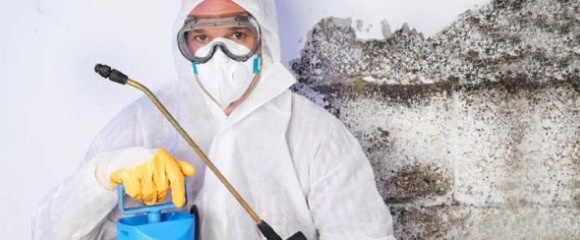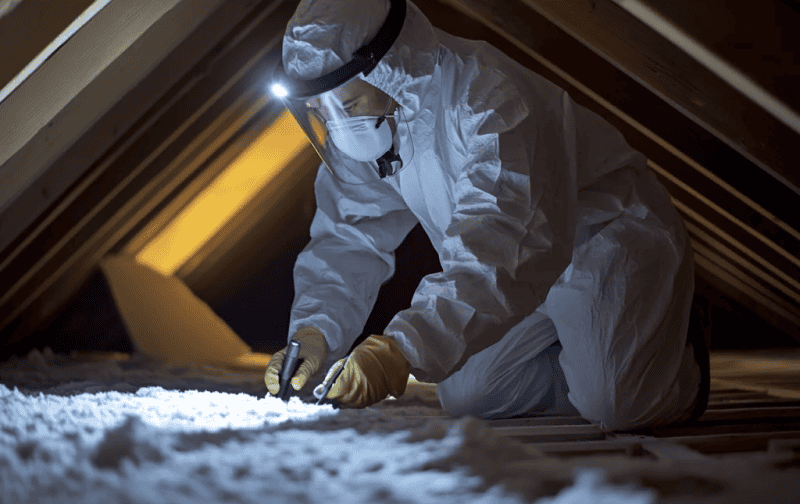Mold Remediation in Tacoma, WA
Mold Remediation in Tacoma is essential for maintaining a healthy living environment. Mold can develop quickly in damp areas, posing serious health risks to you and your family. Whether it's due to a leaky roof, flooding, or high humidity, addressing mold issues promptly is crucial to prevent further damage to your property and ensure the safety of your loved ones.
At Disaster Response, we understand the urgency of mold problems. Our team of experts is equipped with the latest technology and techniques to identify and eliminate mold effectively. We conduct thorough inspections to assess the extent of the mold growth and develop a tailored remediation plan that addresses your specific needs. Our goal is to restore your home to a safe and healthy condition as quickly as possible.
Mold can not only damage your property but also lead to various health issues, including respiratory problems and allergies. That's why our mold remediation services in Tacoma focus on not just removing the visible mold but also addressing the underlying moisture issues that allow mold to thrive. We take a comprehensive approach to ensure that your home is not only mold-free but also protected against future infestations.
Choosing Disaster Response means you're opting for professionalism and expertise in mold remediation. Our dedicated team is committed to providing exceptional service, ensuring that your home is safe and comfortable. Don't let mold compromise your health and property—contact us today for a thorough assessment and effective remediation solutions tailored to your needs.

- Disaster Response: The Authority on Tacoma Mold Remediation
- Disaster Response: The Leading Authority on Mold Remediation in Tacoma
- Mold Testing and Remediation Overview: Following IICRC S520 Standards
- Do You Really Need a Mold Remediation Expert in Tacoma?
- Reach Out to a Mold Remediation Specialist in Tacoma, WA, for These Mold-Related Issues
- Essential Steps to Take After Discovering Mold in Your Home in Tacoma
Disaster Response, The Authority on Tacoma Mold Remediation
Finding a reliable mold remediation service in Tacoma, WA, can be overwhelming, but with Disaster Response, the choice becomes clear. With years of experience in the industry, we specialize in effectively eliminating mold and restoring your home or business to a safe environment. Our dedicated team understands the health risks associated with mold exposure and is committed to providing thorough and efficient remediation services.

At Disaster Response, we utilize advanced techniques and state-of-the-art equipment to identify and remove mold from your property. Our experts conduct comprehensive inspections to assess the extent of the mold problem, ensuring that no hidden spores are left behind. We prioritize your safety and well-being, employing environmentally friendly products that are safe for both your family and the planet.
Our commitment to excellence extends beyond just mold removal. We also focus on preventing future mold growth by addressing the underlying causes, such as moisture issues and inadequate ventilation. Our team provides valuable advice on maintaining a mold-free environment, empowering you to take proactive steps in safeguarding your property.
Like the iconic landmarks in Tacoma, WA, we stand as a beacon of hope for those facing mold challenges. Our expertise and dedication to customer satisfaction set us apart in the mold remediation industry.
As true specialists in Tacoma mold remediation, we focus exclusively on the following services
- Comprehensive Mold Inspections
- Mold Removal and Cleanup
- Air Quality Testing
- Moisture Control Solutions
- Preventative Treatments
- Structural Drying and Dehumidification
- Post-Remediation Verification
- Emergency Response Services
- Residential and Commercial Services
- Consultation and Education on Mold Prevention
At Disaster Response, we strive to be THE authority on mold remediation in Tacoma. We understand the urgency of addressing mold issues and are here to provide swift, effective solutions. When you choose our services, you can trust that we will restore your space to a safe and healthy condition, allowing you to breathe easy once again.

Disaster Response: The Leading Authority on Mold Remediation in Tacoma
Finding a reliable mold remediation service in Tacoma can be overwhelming, but with Disaster Response, the choice is clear. With years of experience in the industry, we specialize in effectively identifying and eliminating mold issues, ensuring a safe and healthy environment for our clients. Our dedicated team understands the complexities of mold growth and is committed to providing top-notch service tailored to your specific needs.

At Disaster Response, we utilize advanced techniques and state-of-the-art equipment to assess and remediate mold infestations. Our experts are trained to handle various types of mold, from common household varieties to more hazardous species, ensuring that your property is thoroughly treated. We prioritize safety and efficiency, working diligently to restore your space to its original condition while minimizing disruption to your daily life.
Our comprehensive approach includes not only the removal of mold but also addressing the underlying causes of moisture that contribute to its growth. We believe in educating our clients about mold prevention and maintenance, empowering them to take proactive steps in safeguarding their homes or businesses. With our commitment to excellence, you can trust that your mold remediation project is in capable hands.
As a leading provider of mold remediation services in Tacoma, we pride ourselves on our customer-centric approach. We understand that dealing with mold can be stressful, which is why we strive to make the process as seamless as possible. Our team is here to guide you every step of the way, ensuring that you feel supported and informed throughout the entire remediation process.
- Comprehensive Mold Inspections
- Mold Removal and Cleanup
- Air Quality Testing
- Moisture Control Solutions
- Preventative Treatments
- Structural Drying and Dehumidification
- Post-Remediation Verification
- Emergency Response Services
- Residential and Commercial Services
- Consultation and Education on Mold Prevention
At Disaster Response, we are dedicated to being the leading authority on mold remediation in Tacoma. Our expertise and commitment to customer satisfaction set us apart in the industry. When you choose us, you can rest assured that we will restore your property to a safe and healthy state, allowing you to breathe easy once again.
Mold Testing and Remediation Overview: Following IICRC S520 Standards
The IICRC S520 standard provides a clear guide for safely managing mold issues in homes and buildings. Its main goals are to protect people, ensure thorough cleanup, and prevent future mold problems.
1. Assessment and Inspection
Initial Assessment:
- Trained professionals will conduct a detailed inspection of the affected area. This includes visual checks and using tools like moisture meters and infrared cameras to find hidden mold or moisture.
- Understanding moisture sources is crucial, as mold often arises from water issues or high humidity.
Mold Sampling:
- Although not always needed, testing (both air and surface samples) can help identify the type and amount of mold present.
- Sampling is useful when mold is suspected but not visible, such as when there are odors or health concerns.
- If sampling is done, it must follow proper protocols, with analysis performed by accredited labs.
2. Containment Protocols
Containment Procedures:
- To stop mold spores from spreading during cleanup, barriers (like plastic sheeting and negative air pressure) are used.
- The extent of containment varies; small areas might require basic barriers, while larger or heavily contaminated spaces need more extensive containment.
- Workers must enter and exit through decontamination chambers to avoid spreading mold.
3. Personal Protective Equipment (PPE)
- Workers should wear appropriate PPE, including gloves, N95 masks, full-body suits, and eye protection.
- The type of PPE needed depends on how severe the contamination is; more protective gear may be required for heavily affected areas.
4. Remediation Process
Source Control:
- Addressing the root cause of moisture is essential. This may involve fixing leaks, improving ventilation, or managing humidity.
Cleaning and Removal of Mold:
- Mold cannot just be treated with chemicals; it must be physically removed.
- Non-porous materials (like metals and glass) can often be cleaned with HEPA vacuums or damp cloths.
- Severely affected porous materials (like drywall and carpets) should be removed and disposed of according to local regulations.
- HEPA air filtration systems should be used to capture airborne mold spores during cleanup.
Cleaning Techniques:
- Common methods include HEPA vacuuming and scrubbing surfaces where mold is present.
- Antimicrobial agents may be used, but the focus is on physical removal.
5. Post-Remediation Evaluation
Final Inspection:
- After cleanup, a visual inspection ensures no visible mold remains.
- Air and surface tests may be conducted to confirm that mold levels are back to normal.
- It's crucial to check that the environment is dry to prevent mold from returning.
Documentation and Reporting:
- Detailed records of the remediation process, including testing results and cleanup procedures, should be maintained.
- This documentation is important for compliance and may be needed for insurance or legal matters.
6. Ongoing Prevention
- Educating building occupants about moisture control is vital. This includes maintaining HVAC systems, managing humidity, and promptly addressing leaks.
By adhering to the IICRC S520 standard, mold remediation professionals take a systematic and health-focused approach, ensuring that indoor spaces are restored to safe, mold-free conditions.
Do You Really Need, Need a Mold Remediation Expert in Tacoma?
While it may be tempting to tackle mold issues on your own, hiring a professional mold remediation service can ensure a thorough and effective solution. Mold can pose serious health risks and structural damage to your home, making it crucial to address the problem with expertise. Disaster Response specializes in mold remediation, providing the knowledge and tools necessary to restore your environment safely and efficiently.

Understanding the Mold Remediation Process
Mold remediation involves a systematic approach to identify, contain, and eliminate mold growth. Professionals like those at Disaster Response utilize advanced techniques and equipment to assess the extent of the mold infestation. This process includes air quality testing, surface sampling, and moisture control measures to prevent future growth. By understanding the specific conditions that led to mold development, experts can implement effective solutions tailored to your situation.

Health Risks Associated with Mold Exposure
Mold can lead to a variety of health issues, particularly for individuals with respiratory conditions, allergies, or weakened immune systems. Symptoms may include coughing, sneezing, skin irritation, and even more severe reactions in sensitive individuals. Engaging a mold remediation expert ensures that the mold is not only removed but that the air quality in your home is restored to a safe level, protecting the health of your family.

Preventing Future Mold Growth
After remediation, it's essential to take proactive steps to prevent mold from returning. Disaster Response provides guidance on moisture control, ventilation improvements, and regular inspections to maintain a mold-free environment. By addressing the underlying causes of mold growth, such as leaks or high humidity, you can significantly reduce the risk of future infestations.

The Importance of Professional Equipment and Techniques
Attempting to remove mold without the proper equipment can lead to incomplete removal and potential health hazards. Professionals use specialized tools such as HEPA vacuums, air scrubbers, and moisture meters to ensure thorough remediation. Disaster Response's trained technicians are equipped to handle even the most challenging mold situations, ensuring that your home is restored to a safe and healthy state.
Reach Out to a Mold Remediation Specialist in Tacoma, WA, for These Mold-Related Issues
Mold growth can occur in various environments, particularly in areas with high humidity or water damage. This fungal growth can lead to significant health risks, property damage, and unpleasant odors. Recent studies have shown an increase in mold-related issues in Tacoma, with many homeowners facing challenges in managing and eliminating mold effectively. If you find yourself dealing with any of the following mold situations, it's crucial to contact a mold remediation expert promptly:
Visible Mold Growth
If you notice mold on walls, ceilings, or other surfaces, it's a clear sign that professional intervention is needed. Mold can spread quickly and may indicate underlying moisture problems.
Musty Odors
A persistent musty smell in your home can be a strong indicator of hidden mold. This odor often suggests that mold is present, even if it's not immediately visible.
Water Damage
Following a leak, flood, or any water intrusion, the risk of mold growth increases significantly. It's essential to address any water damage promptly to prevent mold from taking hold.
Health Symptoms
If you or your family members are experiencing unexplained respiratory issues, allergies, or skin irritations, mold exposure could be the culprit. Seeking professional help can ensure a safe living environment.
Condensation Issues
Excessive condensation on windows, walls, or pipes can create a breeding ground for mold. Addressing these issues with a mold remediation service can help prevent future growth.
Previous Mold Problems
If you've dealt with mold in the past, it's vital to monitor the area for any signs of recurrence. A professional can assess the situation and implement preventive measures.
Regardless of the mold issue you're facing, it's important to understand that Tacoma residents should act quickly to mitigate the risks associated with mold exposure. Mold can not only damage your property but also pose serious health risks to you and your family. Engaging a qualified mold remediation specialist like Disaster Response can provide the expertise needed to effectively eliminate mold and restore your home to a safe condition.
Essential Steps to Take After Discovering Mold in Your Home in Tacoma
Finding mold in your home can be alarming and overwhelming. Mold can grow quickly and pose health risks, so it's crucial to act promptly. Here are the steps you should follow if you discover mold in your Tacoma residence:
- Identify the source of moisture that is causing the mold growth.
- Ensure the affected area is well-ventilated to minimize exposure.
- Avoid touching or disturbing the mold, as this can release spores into the air.
- Document the extent of the mold growth with photographs for your records.
- Contact a professional mold remediation service to assess the situation.
- Follow any safety recommendations provided by the remediation experts.
- Keep children and pets away from the affected area until it has been treated.
- Review your home's ventilation and humidity levels to prevent future mold growth.
If you find mold in your home, it's essential to address it quickly to protect your health and property. Mold can lead to various health issues, including respiratory problems and allergic reactions. At Disaster Response, we specialize in mold remediation and are dedicated to restoring your home to a safe and healthy environment.
Contact Your Local Mold Remediation Experts in Tacoma, WA, for a Free Consultation
At Disaster Response, we understand the stress and uncertainty that comes with mold issues. Our team is committed to providing you with the highest level of service and support during this challenging time. We approach every situation with professionalism, care, and urgency.
Our mold remediation specialists will work diligently to identify the source of the mold, safely remove it, and implement measures to prevent its return. When your home's safety and your family's well-being are at stake, don't settle for anything less than the best—choose Disaster Response today.
Contact Your Emergency
Disaster Response Now!
Latest News in Tacoma, WA
16 Firefighter Spots May be Eliminated with Proposed Tacoma, WA, Budget
Shea Johnsonhttps://www.firehouse.com/careers-education/news/55245573/16-firefighter-spots-may-be-eliminated-with-proposed-tacoma-wa-budget
Nov. 22—Tacoma firefighters are upset over the city's decision to cut 16 positions in its proposed upcoming budget, accusing city leaders of risking lives and being unresponsive to the needs of overworked crews.The 2025-26 biennial budget, which city officials met to discuss this week, increases funding for the Tacoma Fire Department by about 10%. But it also calls for eliminating funding for 16 roving firefighters tasked with covering shifts of colleagues unavailable for work due to unplanned leave and other reasons.The ...
Nov. 22—Tacoma firefighters are upset over the city's decision to cut 16 positions in its proposed upcoming budget, accusing city leaders of risking lives and being unresponsive to the needs of overworked crews.
The 2025-26 biennial budget, which city officials met to discuss this week, increases funding for the Tacoma Fire Department by about 10%. But it also calls for eliminating funding for 16 roving firefighters tasked with covering shifts of colleagues unavailable for work due to unplanned leave and other reasons.
The program was enacted this year in response to an increase in leave, such as sick or paid family and medical leave, among firefighters. It was intended to be a temporary solution to help reduce the costs of overtime and maintain service levels, according to the city.
In Tacoma's proposed new budget, the roving positions were eliminated, saving the city $4.2 million. The personnel who filled those roles would be reassigned to other positions within the Tacoma Fire Department, the city said.
For many inside the department, the end of the rover program has made an untenable situation worse. Critics say the department is under-staffed and in need of new equipment and facilities as calls for service continue to rise. About three dozen firefighters expressed frustrations about the proposed budget during a City Council meeting Tuesday.
"The Fire Department is already in crisis and in desperate need of new fire apparatus, increased staffing and improvements to outdated and unsafe 100-year-old facilities," Capt. Chris Perry said.
Allyson Hinzman, president of department union International Association of Fire Fighters Local 31, said that reducing staffing equated to lowering services.
"I think there's a disconnect in that our people are literally killing themselves right now for this department," Hinzman said. "And it is clear that our people care more about this department than the city does."
Several who addressed the dais put the proposed budget change in terms of life and death.
"If you cut our budget, if you cut our finances, the reality is those response times get worse," firefighter Nathan Carlson said. "And it's not just people are unhappy, frowny face — the reality is people are going to die."
As Tacoma contends with expenses outpacing revenues, some city leaders publicly pushed back against the notion that the council was ignoring the Fire Department's concerns. After hearing from more than 30 firefighters on Tuesday, Council member Kiara Daniels noted that the department's total proposed budget increased over the last cycle's and the city approved a 9% raise for firefighters.
The proposed $274 million total budget would exceed the $246 million budget adopted for 2023-2024, according to city figures.
Daniels said that the budget represented a "math problem." She suggested that there would be protests from others had the council proposed cutting from elsewhere and that all items funded were core services, too.
"I'm asking for the respect of not calling us murderers when we've done nothing but give raises and do everything that you all have asked since I've been here," she said.
Tough budget decisions
The backlash comes as Tacoma's financial picture at large looks bleak. Across the board, the city was forced to shore up a projected $24 million structural deficit by reducing expenses, eliminating certain tax exemptions, using fund balances and other means.
"Despite economic challenges like inflation and a slowing economy, the proposed budget focuses on maintaining essential services and building trust with residents," city spokesperson Maria Lee said in a statement.
The failure of a proposed property tax on the Nov. 5 ballot, which would have generated some $30 million annually for the fire department, didn't help matters. If voters would have approved the levy, the rover program would have been maintained, according to City Manager Elizabeth Pauli.
In a special meeting Wednesday, Council member John Hines proposed saving the program by reallocating dollars from a mental health and substance-use disorders fund and enacting staff cuts. Under Hines' proposal, the fund would be restocked by settlement money received from companies found to have fueled the opioid epidemic. He withdrew his proposal after it became clear that fellow lawmakers were reluctant to steer money from the fund.
The budget's proposed elimination of the rover program came after interim Fire Chief Sionna Stallings-Ala'ilima was asked by the city to reduce fire spending by about $4 million to address the structural deficit. She chose to cut the program over the alternative of shutting down an engine, she said during a council study session days after the election.
She said she would work with her team on strategic staffing plans to help the department stay within its $3 million overtime budget and decrease the need to reduce service levels. Last year, the department was between $8 million and $9 million over budget, but that figure shrunk to $3.5 million following the inception of the rover program, she said during this week's council meeting.
Factoring in two recruiting classes and anticipated retirements, the department is expected to net roughly 30 additional firefighters next year, according to Stallings-Ala'ilima.
During the special meeting on Wednesday, Mayor Victoria Woodards said that the only permanent fix to the city's structural deficit was to increase revenue, and she asked the Fire Department to put itself in the city's shoes as it faced requests to pull money from other needs.
"I would like to cut nothing," Woodards said, "but that is not the reality."
___
(c)2024 The News Tribune (Tacoma, Wash.)
Visit The News Tribune (Tacoma, Wash.) at www.TheNewsTribune.com
Distributed by Tribune Content Agency, LLC.
Voice Your Opinion!
Disclaimer:


 Call us 877-451-9251
Call us 877-451-9251 Request Information
Request Information